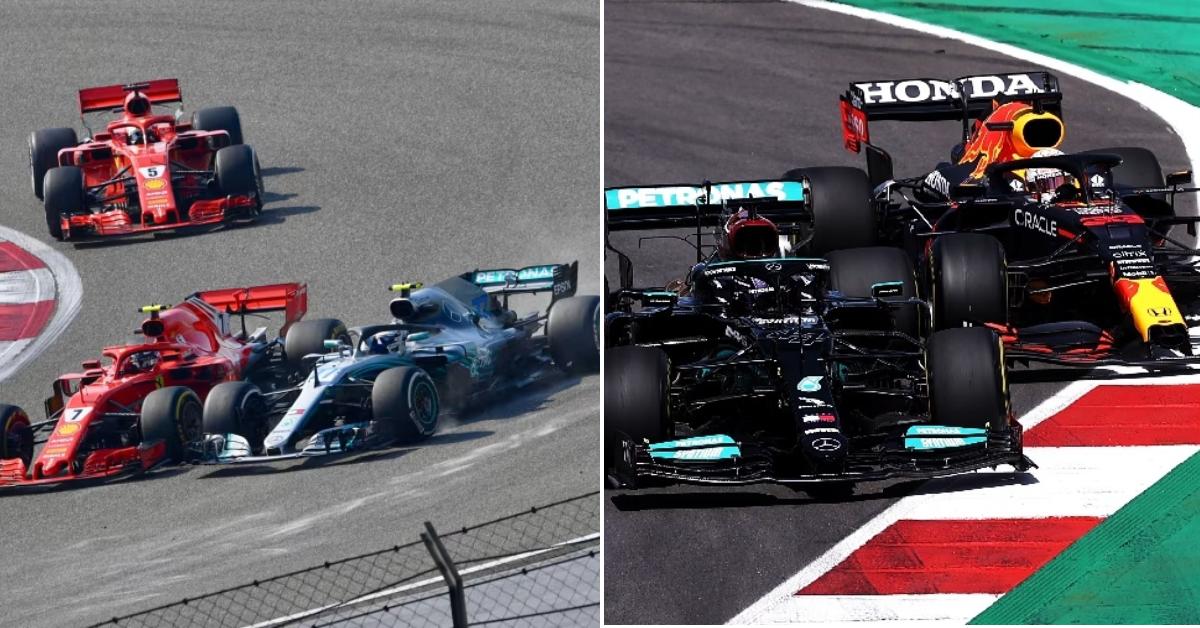When racing, sometimes a Formula 1 driver comes behind a driver he needs to pass to achieve more points. The overtaking is strategically planned and enacted so that the driver can have a good race and hopefully finish ahead. However, sometimes the drivers don’t overtake in F1. They stay in their position during specific sessions.
But how do they decide to stay in their spot? Why don’t they overtake? Are the teams involved in the call, or is it up to the driver? What happens if they overtake anyway?
How is overtaking decided?
When a driver needs to overtake the driver in front, there are various things to consider. An overtake should be done without ruining the race for both drivers. A lot of overtakes end up with the cars colliding.
How on earth did @alex_albon do that?! 🤯
A simply incredible double overtake from the Williams driver 🍿#F1 #CanadianGP pic.twitter.com/GZcdZEnWh0
— Formula 1 (@F1) June 9, 2024
The drivers usually use the speed generated by slipstreams and/or DRS to overtake on straights, which is usually straightforward. For turns, the drivers have to decide on which line to take: the outside or the inside. Either the overtake is done at one turn or in a chicane.
The most important aspect of overtaking is the gap. If there is enough gap for a driver to pass by, they can attempt an overtake lest they ruin the race for both. Monaco is considered a very difficult track to overtake, considering the width of most of the roads is not enough for two cars side-by-side.
Overtaking is one of the biggest strategic decisions a driver can take on the track. Sometimes drivers swerve the cars to bait the leading car to create a gap, a trick that works on straights.
Gentleman’s Agreement during qualifying
When considering overtaking, most drivers consider the ‘gentleman’s agreement’. The gentleman’s agreement is an agreement not to overtake the driver in front of them during qualifying. This is so they do not attempt to pass each other to gain a better position during qualifying. While most drivers follow the gentleman’s agreement, it is not an official rule, so drivers can do whatever they feel is necessary.
After tens of thousands of your votes, we have a winner. The Best Overtake of 2017 is… @DanielRicciardo‘s Baku triple pass 👏👏👏 pic.twitter.com/TV85RVdIX3
— Formula 1 (@F1) December 9, 2017
Several times in F1’s history, drivers have disregarded the agreement. They are usually called out afterwards for not following the agreement, as some teams and drivers find it childish and disrespectful. However, at the end of the day, it is up to the driver what to do, and as long as it is within the parameters of the official rules, they can overtake during qualifying.
What are the rules for overtaking in F1?
Like every part of racing in F1, overtaking has rules. The rules are necessary to ensure fair and safe racing. One of the most commonly used and cited rules is that enough space must be left for the driver attempting to overtake. The space must be left by the car being overtaken so that the overtake can be done safely and in a controlled manner. When the overtake is unsuccessful, it can cause a collision with another car or the barrier.
Another widely known rule is that you can not overtake during a safety car period or the formation lap. Overtaking must also remain inside the racing lines, or the drivers may face a penalty.
The drivers can not go outside the track limits and gain a lasting advantage. If the drivers do that, they will be penalised, they may also receive penalty points if doing so causes further issues on the track with another driver. Every F1 driver is highly qualified and knows how to pull off a successful overtake.












